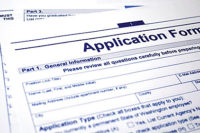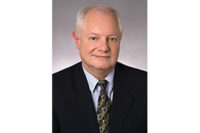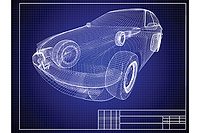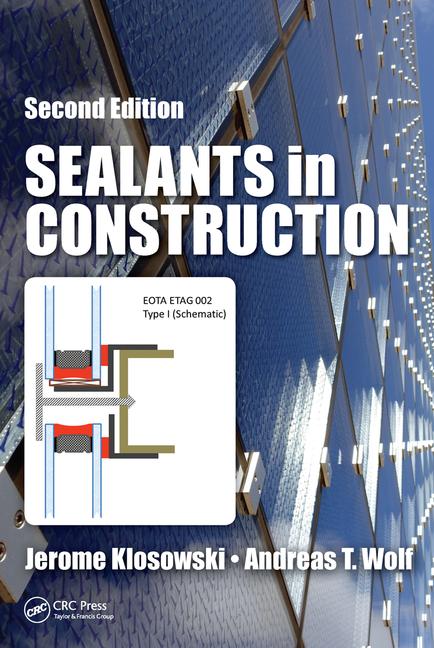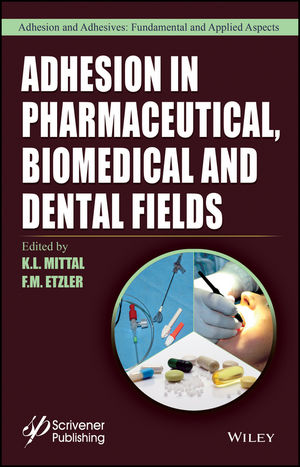IP In Depth: The $99 Provisional Patent Application
Does the risk outweigh the benefits?
In my last column (June 2010), I mentioned the possible use of provisional patent applications to control costs associated with protecting intellectual property (IP). A more thorough explanation of provisional patent applications is necessary to understand the risks and benefits of this approach to obtaining IP protection.
On June 8, 1995, the U.S. Patent and Trademark Office (USPTO) began offering inventors the option of filing provisional patent applications, which were designed to provide a lower cost first patent filing in the U.S. Over the last five years, more than 100,000 provisional patent applications have been filed annually.
Websites that assist inventors in creating and filing provisional patent applications often include thumbnail explanations of the legal requirements and rights of provisional patent applications (some quoting federal legal codes and regulations) and require inventors to acknowledge that they understand the necessary legal aspects of provisional patent applications. While these websites promote the advantages and relative ease of preparing and filing provisional patent applications, they do not address what can go wrong or how a defective provisional patent application can result in losing protection and the rights to an invention.
It is important to note that each of these benefits only applies to provisional patent applications that are converted into formal or non-provisional patent applications within 12 months from the filing date of the provisional patent applications. A provisional patent application is not examined. Accordingly, the patentability of provisional patent applications is not evaluated or determined.
A provisional patent application is not published and, therefore, does not become a prior art reference against a later filed patent application by another inventor. Unless a provisional patent application is converted into a formal patent application that is subsequently examined and granted, there is no “patent” term associated with a provisional patent application.
It is important to bear in mind that once a provisional patent application is filed, the burden is on the applicant to convert the provisional patent application into a formal patent application within 12 months of the filing date of the provisional patent application.

Under 35 USC §112, all provisional patent applications must meet three requirements: written description, enablement, and best mode. To meet the written description requirement, an application has to distinctly and clearly describe the invention so that it can be understood by those skilled in the particular technology. To meet the enablement requirement, an application has to include sufficient detail so that those skilled in the particular technology can practice (“make and use”) the invention. To meet the best mode requirement, an application must include a disclosure of what the inventor(s) believes to be the best mode of practicing the invention at the time the application is filed.
37 CFR 1.81 requires that a drawing be included in a provisional patent application when necessary for an understanding of the subject matter sought to be patented. The determination of when a drawing is necessary will not be addressed if and until a provisional patent application is converted into a utility patent application and enters the examination phase.
Some websites note that there is no prior art submission requirement for a provisional patent application. This is true since provisional patent applications are not examined. However, when the provisional patent application is converted into a formal patent application, the applicant is required to make prior art submissions to the USPTO.
Provisional patent applicants need to be mindful that, although there is no requirement for prior art submissions in a provisional patent application, the applicant should still be concerned about any prior art and should conduct a prior art search. During examination of the later filed formal patent application, prior art will become an issue and can prevent an applicant from obtaining a granted patent.
However, absent an applicant having a prior art search conducted, relevant prior art cited by a patent examiner might not show up for years after the provisional patent application is filed. Over that period of time, the applicant could well make a significant investment in developing and exploiting his/her invention only to be surprised by relevant prior art discovered and cited by a patent examiner that adversely impacts the prosecution of the resulting formal application.
Attempts at making corrections to satisfy the requirements of 35 USC or 37 CFR will invariably result in “new matter” rejections during prosecution of the formal patent applications when such problems come to light. A successful “new matter” rejection imposed by a patent examiner will prevent an applicant from being able to correct and salvage a defective provisional patent application.
Failure to meet any of the requirements of 35 USC or 37 CFR can result in a finding that the provisional patent application is fatally defective-a problem that might not be discovered until the provisional patent application has been converted to a formal patent application that has entered examination. If a provisional patent application is found to be fatally defective, the right to claim priority of the formal patent application back to the filing date of the provisional patent will be lost and any intervening prior art could jeopardize the prosecution of the formal patent application.
While provisional patent applications can be low-cost alternatives, the risk of not having a provisional patent application reviewed by a patent practitioner is significant. Provisional patent applications are especially helpful where:
Any views or opinion expressed in this column are those of the author and do not represent those of Adhesives & Sealants Industry, its staff, Editorial Advisory Board or BNP Media.
In my last column (June 2010), I mentioned the possible use of provisional patent applications to control costs associated with protecting intellectual property (IP). A more thorough explanation of provisional patent applications is necessary to understand the risks and benefits of this approach to obtaining IP protection.
On June 8, 1995, the U.S. Patent and Trademark Office (USPTO) began offering inventors the option of filing provisional patent applications, which were designed to provide a lower cost first patent filing in the U.S. Over the last five years, more than 100,000 provisional patent applications have been filed annually.
Internet-Based Applications
In response to the growing interest in provisional patent applications, the Internet has become flooded with websites that offer inventors assistance in creating their own “free” provisional patent applications and becoming “patent pending in two hours” with a provisional patent application for as little as $99. Many other offers that seem too good to be true can also be found on the Internet.Websites that assist inventors in creating and filing provisional patent applications often include thumbnail explanations of the legal requirements and rights of provisional patent applications (some quoting federal legal codes and regulations) and require inventors to acknowledge that they understand the necessary legal aspects of provisional patent applications. While these websites promote the advantages and relative ease of preparing and filing provisional patent applications, they do not address what can go wrong or how a defective provisional patent application can result in losing protection and the rights to an invention.
Potential Benefits
The USPTO promotes three benefits associated with provisional patent applications: patentability would be evaluated as though the application was filed on the earlier provisional application filing date; the resulting publication or patent would be treated as a reference under 35 U.S.C. § 102(e) as of the earlier provisional application filing date; and the 20-year patent term would be measured from the later non-provisional application filing date.It is important to note that each of these benefits only applies to provisional patent applications that are converted into formal or non-provisional patent applications within 12 months from the filing date of the provisional patent applications. A provisional patent application is not examined. Accordingly, the patentability of provisional patent applications is not evaluated or determined.
A provisional patent application is not published and, therefore, does not become a prior art reference against a later filed patent application by another inventor. Unless a provisional patent application is converted into a formal patent application that is subsequently examined and granted, there is no “patent” term associated with a provisional patent application.
It is important to bear in mind that once a provisional patent application is filed, the burden is on the applicant to convert the provisional patent application into a formal patent application within 12 months of the filing date of the provisional patent application.

Application Requirements
Some websites advise that provisional patent applications are not difficult for inventors to draft themselves because no particular format (sometimes stated as “formal”) requirement exists for provisional patent applications. While it is true that there is no particular format requirement, provisional patent applications have to meet the requirements of Title 35 of the U.S. Code (35 USC) that regulates U.S. Patent Law, as well as Title 37 of the Code of Federal Regulations (37 CFR). Several requirements of 35 USC that conflict with a broad notion that there is no format requirement for provisional patent application are found in 35 USC §112.Under 35 USC §112, all provisional patent applications must meet three requirements: written description, enablement, and best mode. To meet the written description requirement, an application has to distinctly and clearly describe the invention so that it can be understood by those skilled in the particular technology. To meet the enablement requirement, an application has to include sufficient detail so that those skilled in the particular technology can practice (“make and use”) the invention. To meet the best mode requirement, an application must include a disclosure of what the inventor(s) believes to be the best mode of practicing the invention at the time the application is filed.
37 CFR 1.81 requires that a drawing be included in a provisional patent application when necessary for an understanding of the subject matter sought to be patented. The determination of when a drawing is necessary will not be addressed if and until a provisional patent application is converted into a utility patent application and enters the examination phase.
Some websites note that there is no prior art submission requirement for a provisional patent application. This is true since provisional patent applications are not examined. However, when the provisional patent application is converted into a formal patent application, the applicant is required to make prior art submissions to the USPTO.
Provisional patent applicants need to be mindful that, although there is no requirement for prior art submissions in a provisional patent application, the applicant should still be concerned about any prior art and should conduct a prior art search. During examination of the later filed formal patent application, prior art will become an issue and can prevent an applicant from obtaining a granted patent.
However, absent an applicant having a prior art search conducted, relevant prior art cited by a patent examiner might not show up for years after the provisional patent application is filed. Over that period of time, the applicant could well make a significant investment in developing and exploiting his/her invention only to be surprised by relevant prior art discovered and cited by a patent examiner that adversely impacts the prosecution of the resulting formal application.
Attempts at making corrections to satisfy the requirements of 35 USC or 37 CFR will invariably result in “new matter” rejections during prosecution of the formal patent applications when such problems come to light. A successful “new matter” rejection imposed by a patent examiner will prevent an applicant from being able to correct and salvage a defective provisional patent application.
Failure to meet any of the requirements of 35 USC or 37 CFR can result in a finding that the provisional patent application is fatally defective-a problem that might not be discovered until the provisional patent application has been converted to a formal patent application that has entered examination. If a provisional patent application is found to be fatally defective, the right to claim priority of the formal patent application back to the filing date of the provisional patent will be lost and any intervening prior art could jeopardize the prosecution of the formal patent application.
Patent Pending
Websites promote that the filing of a provisional patent application allows inventors to use “Patent Pending” notices in conjunction with their inventions. “Patent Pending” notices associated with provisional patent applications do not provide any enforceable rights against third parties. Enforceable rights are only available for granted patents. Applicants need to be aware that the continuous use of a “Patent Pending” notice based on a provisional patent application that has not been converted into a formal application within 12 months can expose the applicant to false marking claims, including penalties of up to $500 for every falsely marked product.While provisional patent applications can be low-cost alternatives, the risk of not having a provisional patent application reviewed by a patent practitioner is significant. Provisional patent applications are especially helpful where:
- A filing date is needed quickly before an invention becomes available to the public, such as in a conference presentation or the publication of an article or advertisement (vitally important if foreign patent protection will be desired).
- A filing date is needed before an invention has been used publicly or offered for sale in the U.S. or published more than one year prior (to avoid violating the “statutory bars” under U.S. law).
- An inventor wishes to “test the water” and determine the commercial viability of an invention before more money is invested in preparing and filing a formal patent application.
Any views or opinion expressed in this column are those of the author and do not represent those of Adhesives & Sealants Industry, its staff, Editorial Advisory Board or BNP Media.
Looking for a reprint of this article?
From high-res PDFs to custom plaques, order your copy today!



